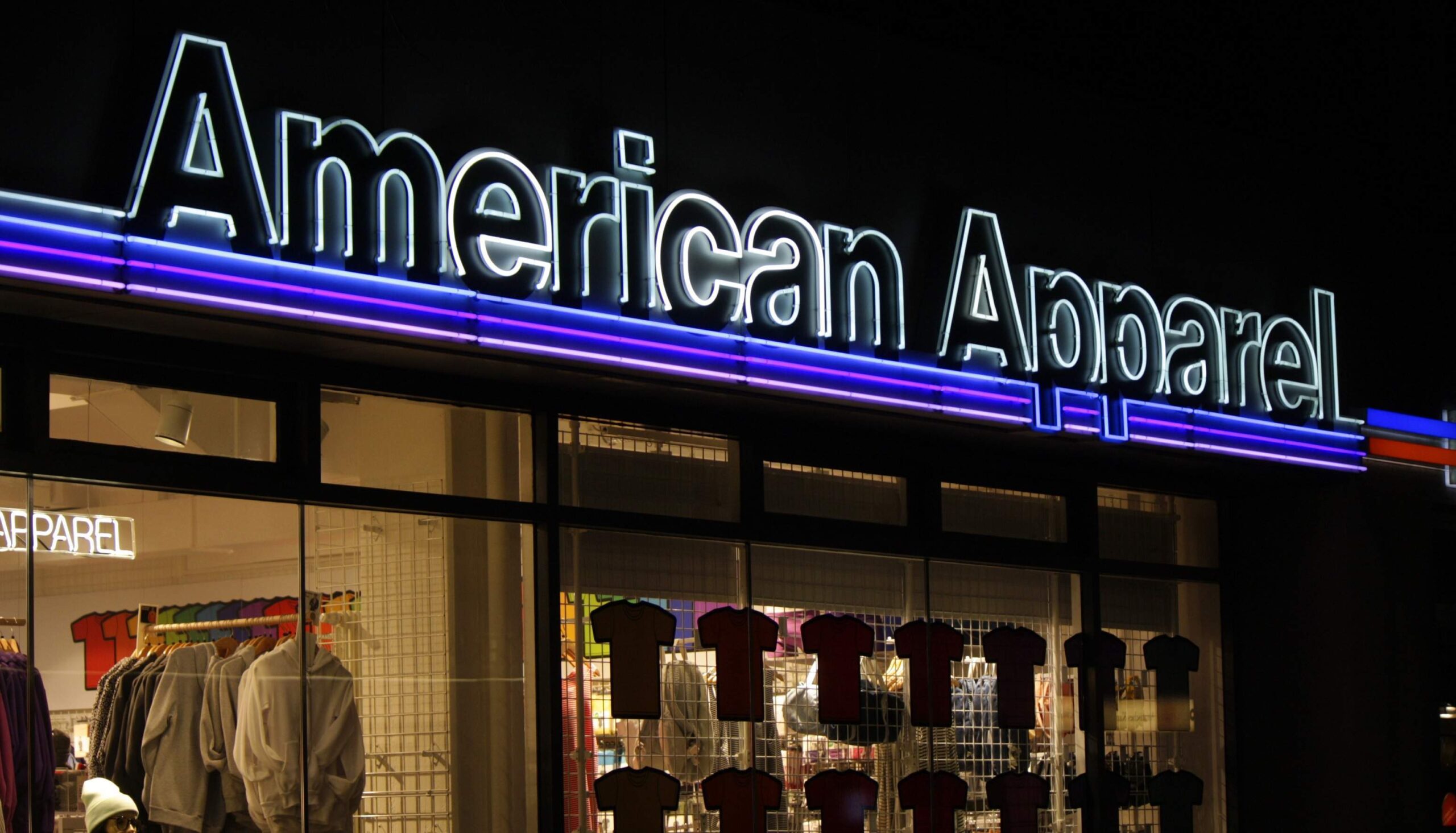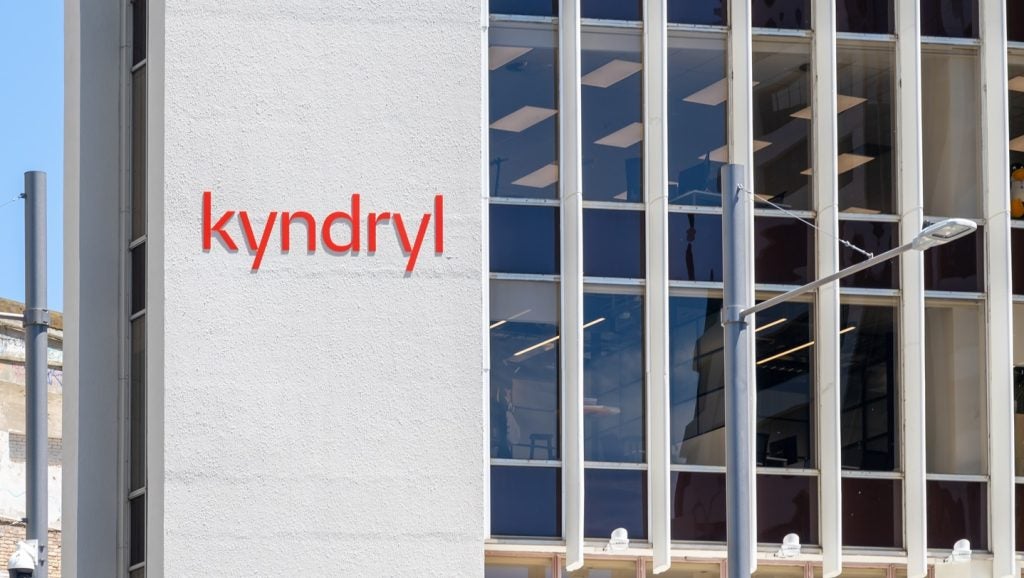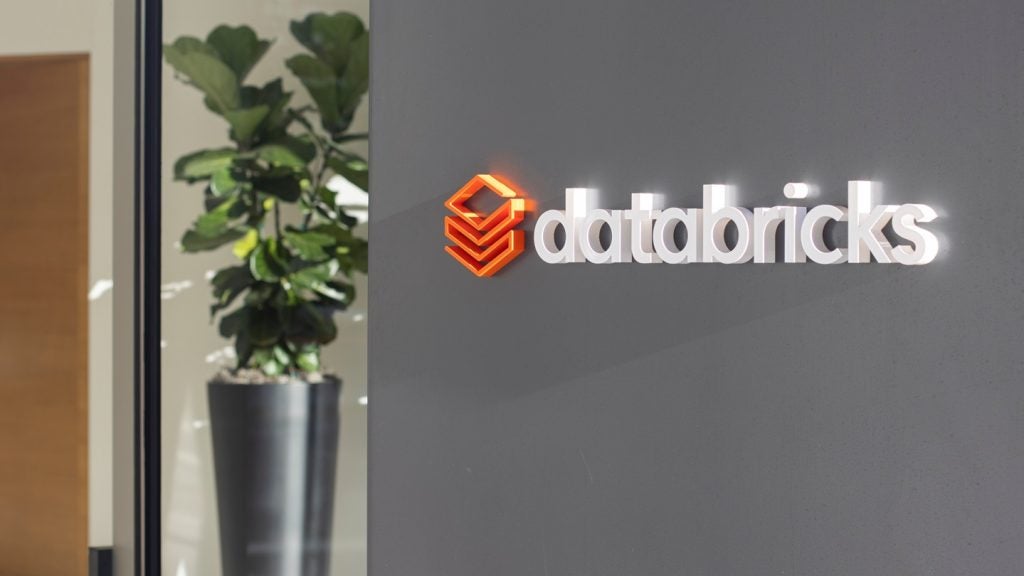
Controversial fashion brand American Apparel is now in business again, selling its edgy jeans and iconic leggings.
The brand has had a difficult history.
Its chief executive, Dov Charney has been dogged by scandal after scandal until he was eventually forced out; it regularly had its ad campaigns banned for being too sexual, and it filed for bankruptcy twice before being bought by Canadian apparel giant Gildan for $88m early this year.
Now Gildan has relaunched the brand as an e-commerce-only venture in the US. How it will function under its new owner and is the retail scene ready to welcome it back?

Garry Bell, Gildan’s vice president of corporate marketing and communications, said the company is excited about the acquisition.

US Tariffs are shifting - will you react or anticipate?
Don’t let policy changes catch you off guard. Stay proactive with real-time data and expert analysis.
By GlobalDataHe tells Verdict:
It remains an iconic brand that really transcended the fashion apparel world with some really strong messaging, ideology and DNA.
However, American Apparel’s status as an iconic brand doesn’t necessarily mean its reappearance on the market will bring consumers flocking. Neil Saunders, managing director of GlobalData Retail, tells Verdict:
In the heyday of American Apparel it was an edgy brand, it was quite controversial, and that was relevant at the time. The brand has been waning because of the troubles it’s faced. And it’s had difficulties because it became less relevant to consumers. The consumer isn’t as rebellious, they are much softer now.
What will American Apparel 2.0 look like?
After completing the purchase of American Apparel back in February, Gildan had to allow the former management to wind down its operations.
This involved shutting stores and liquidating inventory as part of the bankruptcy process.
Yet, Gildan got right on the American Apparel bandwagon straight away.
Six weeks after the transaction was finalised, it was selling American Apparel shirts and jumpers as part of its wholesale business, one of the major elements of Gildan’s operations.
Those t-shirts that you buy from concerts or for completing a 10K run? They’re probably made by Gildan.
Bell adds:
Our first priority with this brand was to integrate it into our print wear business. On the wholesale side, American Apparel is already back in the UK, Canada and the US in that way.
In terms of buying American Apparel branded clothes, however, the company has had to wait to re-launch the brand. It re-established the website last week, rather quietly, which is now selling a smaller selection of original American Apparel products than customers were used to.
Bell said:
What you see online now is phase one of American Apparel back in business for consumers.
Made in America
Whilst the brand is known for its disco pants and edgy ad campaigns, one thing it was always celebrated for was its Made in the USA tagline.
When the brand was established in the late 1990s in Los Angeles, Charney established factories in the city and ensured his workers were paid high wages and provided benefits.
As part of the re-establishment of the brand, Made in the USA-branded clothes are still available but they’re also being offered alongside cheaper garments made in Gildan’s factories in Central America, including Honduras and Nicaragua.

Bell says that Gildan’s corporate social responsibility means that none of its products are made in sweatshops; it does this by operating its own factories instead of contracting manufacturing orders out, so American Apparel clothes can still be called sweatshop-free.
In addition, Gildan established contract manufacturing in Southern California “to continue the made in the US legacy”, explains Bell.
It’s a strong part of the DNA, of the equity of this brand.
Yet, if consumers are offered a choice between a cheaper t-shirt and a more expensive, made in the US, t-shirt, surely they are going to go for the cheaper one?
This is interesting considering the political climate in the US at the moment, with US president Donald Trump calling on companies to keep their production in the country instead of taking it elsewhere, for cheaper wages.
Saunders said:
This [change] will impact the brand positioning. If you’re going to American Apparel because it’s a very American brand, it’s a play on the American heritage, you would find it problematic if the products were made somewhere else and there could be fall out from that.
That being said, according to Saunders, where a product is made doesn’t actually rank highly on the consumer check list.
I think consumers like the idea of saying it’s made in their home country. But when it comes to the act, the job of buying those things, that consideration falls way down the pecking order. What sells clothes is how they look, the style, the design, the branding, and also the prices as well. Anything else is icing on the cake really.
Will Gildan retain Made in the USA products then?
Bell said:
Consumers will tell us whether or not a made in the US product continues to be a product offering and where this brand goes. We’ve invested over $400m in yarn spinning facilities, so we’re not hesitant whatsoever to invest in US manufacturing. We’re the largest domestic consumer of US cotton. As the world’s apparel markets changes, as the demands of consumers for much faster response times, as speed to market becomes more important, these are all factors that we will consider as we look at where the next hub of garments and textile manufacturing happens.
Re-establishment of the brand: phase two
If phase one of the brand’s comeback is e-commerce and US only, what can customers expect from phase two? Will it mean a high-street presence?
Saunders said:
You can be very successful online; brands don’t necessarily need to have a physical presence nowadays so it certainly works. What it will allow Gildan to do is check the waters, refine the products if it’s not quite right. If it is really successful they could move into stores if they want to do that.
Bell hints that Gildan isn’t ruling out an expansion of the brand on to the high street in the future, however.
Everything is possible at this point. We’ve had different groups approach us: ranging from licensing opportunities to retailers that want to take the brand and have it exclusively to them. What it says to us is that, above and beyond what we’ve already envisioned for this brand, there’s a tremendous interest. We think it can be built into one of the best acquisitions we’ve done; it’s such a strong consumer brand, has a strong following, and it rounds out our product offering perfectly. We’re really looking forward to what is to come.
Saunders believes that Gildan can’t just rely on the legacy of American Apparel for it to be a hit with a new generation of shoppers, however.
Gildan will rely on the name and the recognition the name has, that’s why they bought the brand in a way. However, I think they will need to move away from the rebellious, more controversial elements of the brand because I don’t think those are what the market wants anymore.







